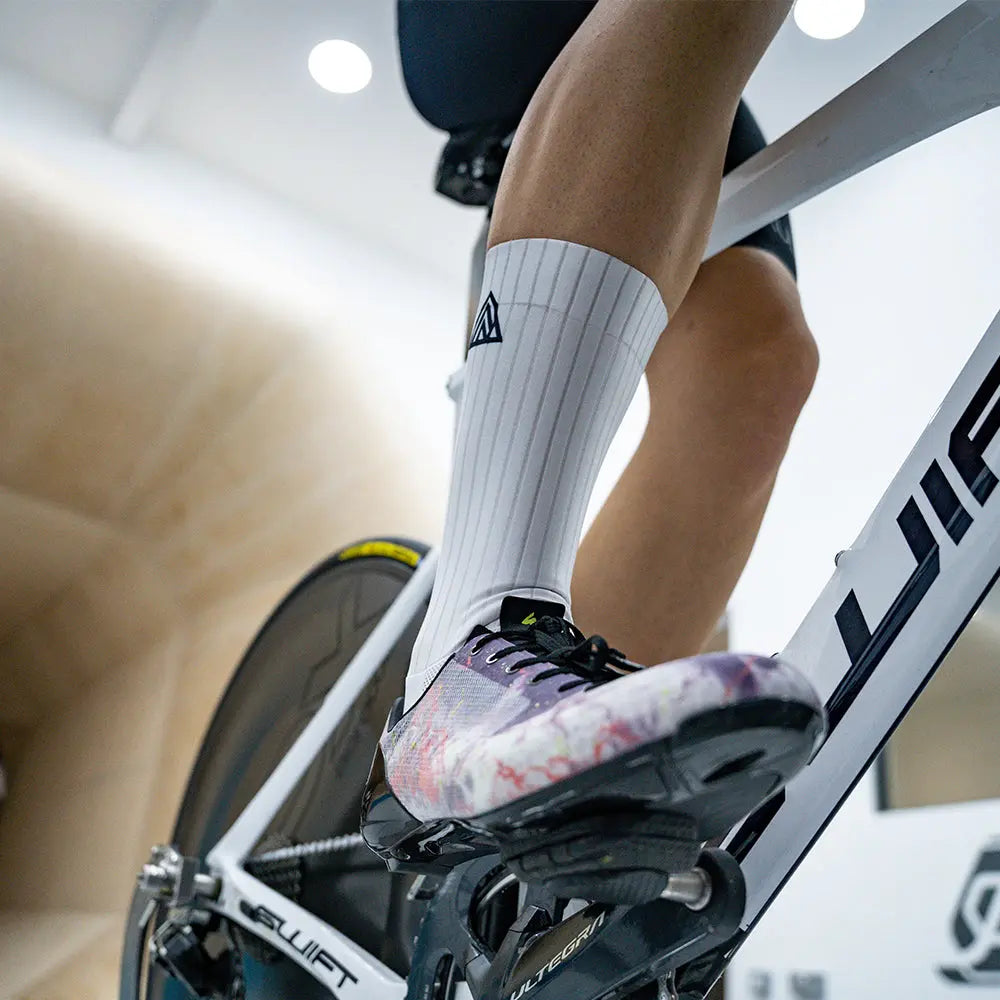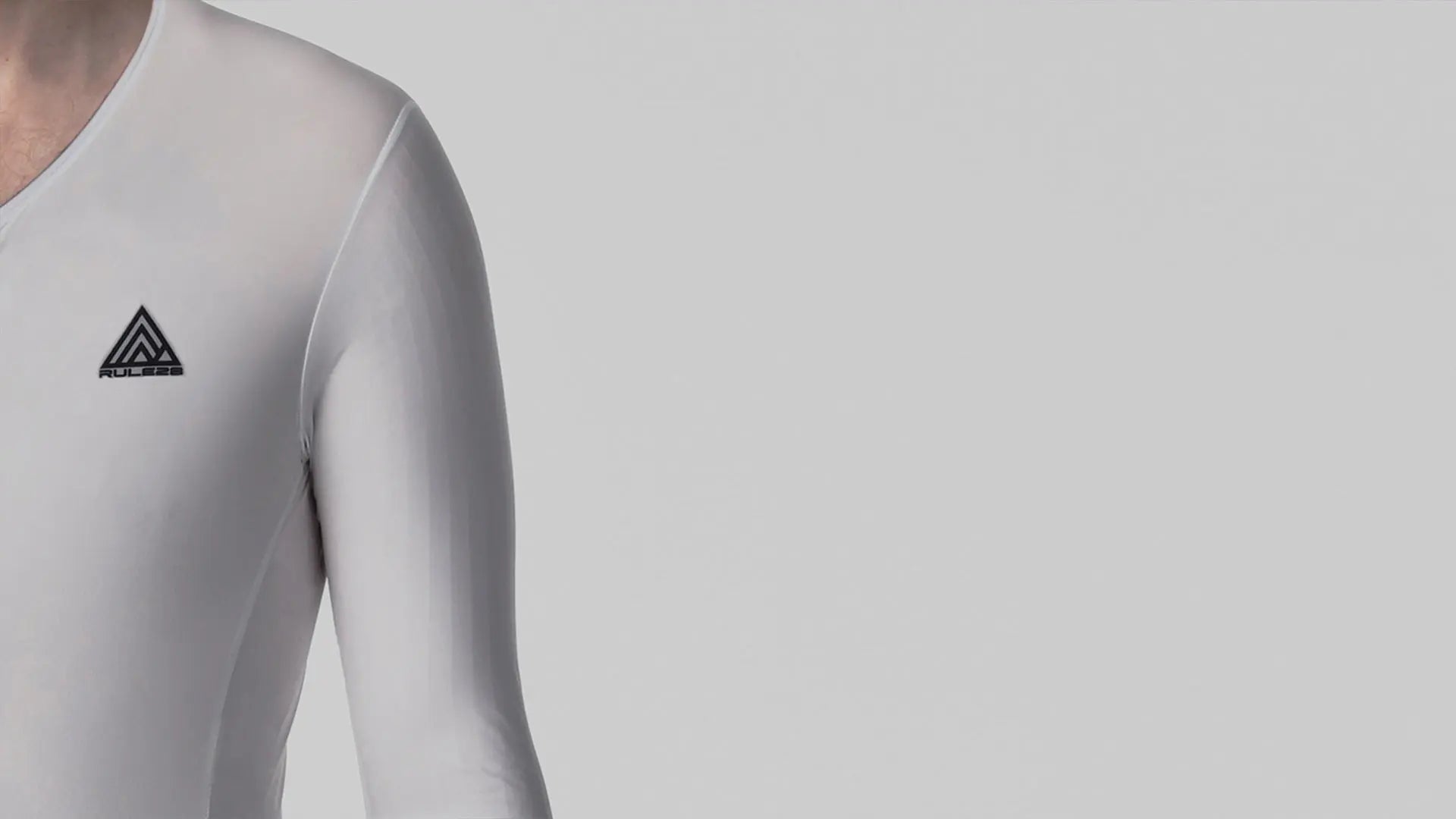There are now many companies offering their own aero socks that all look very similar, however almost none offer any insights into their testing or performance. Looks and aerodynamic performance are two very different things however; so how can you know you're getting the best from your socks?
To answer this, we took our socks, along with five of the most popular of our competitors, to be independently tested by TotalSim at the Silverstone Sports Engineering Hub, Large Wind Tunnel.






Runs were conducted for a speed range of 40-60kph at 5kph increments to develop an understanding of how each sock performed through typical race speeds. A constant cadence of 90rpm was selected for all runs measured by a crank based powermeter.
All aero socks tested were brand new versions of all brands newest versions. All socks were of the same size and pulled to the same height on the legs of our test rider. All tests were conducted over 2x30 second runs, with any erroneous runs repeated. The three run results were then averaged to give a final result for that sock at that speed.
CdA numbers generated by TotalSim were then converted into the Wattage required for the test rider to sustain each speed by Rule 28.
RESULTS


Rule 28 Aero Socks were clear winner, performing the best out of all the options at every speed except one.
K aero socks performed the best at 60kph, saving and extra 0.27W when compared to Rule 28 Aero Socks.
D Aero Socks performed the worst out of all the socks tested at every speed. These socks are more similar in construction to a traditional cycling sock than other aero socks so this result is not unexpected.
Even when controlling for variables such as sock height, a wide disparity in the performance was seen between different makes of Aero Sock. At the extreme, at 50kph an increase in drag equivalent to an extra 21.9W or 6% of total power output was seen between the best and worst socks (Rule 28 and D). There are many fabrics with similar appearances, but as this testing shows, the aerodynamic performance of visually similar fabrics can vary greatly.
A redacted version of the TotalSim test report can be downloaded here: http://tiny.cc/n0zcmz
If you have any questions about our products, please fill out the form on the 'Contact Us' page and we will do our best to answer you.






Share:
Aero Overshoe Testing